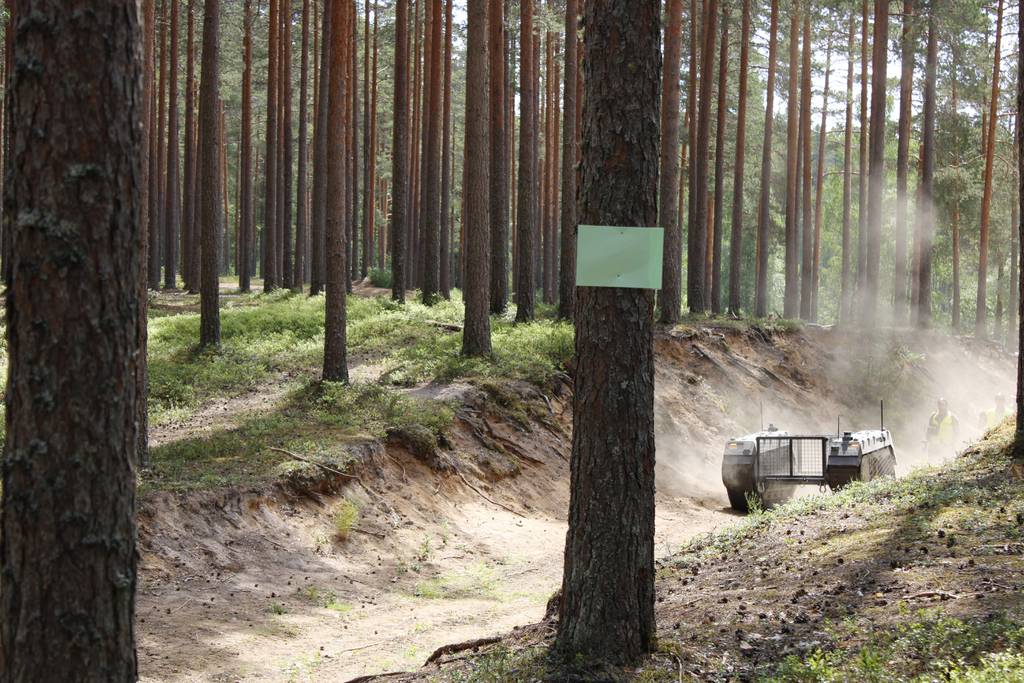MILAN — A Russian defense industry think tank has reportedly upped a cash reward for the capture of an Estonian-made unmanned ground vehicle operating in Ukraine, as ground robots are becoming prized assets on the battlefield.
The Moscow-based Center for Analysis of Strategies and Technologies (CAST) first announced in 2022 that a reward of one million rubles, or roughly $11,000, would be given to any military personnel seizing a THeMIS vehicle, made by Edge Group subsidiary Milrem Robotics, in relatively intact condition.
On Feb. 15, the center’s director, Ruslan Pukhov, told state-owned news agency RIA Novosti that the award would be raised to two million rubles, or almost $22,000.
The decision, Pukhov told RIA Novosti, was in response to a statement made by Estonian intelligence connecting the think tank to the Russian intelligence services.
He was referring to a recent report by the Baltic nation’s foreign intelligence service claiming that Russia’s Federal Security Service (FSB) was recruiting national academics and think tank experts who interact with foreign embassies.
The report directly targets Pukhov as a “protagonist” in this development, stating that he also has “extensive connections within Russia’s political leadership and the Russian Ministry of Defense.”
As of last month, Milrem had delivered 15 THeMIS unmanned vehicles to Ukraine’s forces, the company said in a Jan. 11 statement.
Company executives have said that the unmanned vehicles were performing especially well in missions related to demining and frontline cargo transport, citing feedback from Ukrainian soldiers.
Manufacturer Milrem is aware of the bounty placed on its vehicles, but executives say they are unfazed about the prospect of technology theft.
“Seems like I don’t have to work again this week since CAST has doubled their reward for capturing a THeMIS in Ukraine for 2 million rubles, thus doing marketing for me,” Gert Hankewitz, director of communications at Milrem, posted on LinkedIn this week.
In additional comments provided to Defense News, Hankewitz said that the company has “complete confidence in the Ukrainian army to utilize their THeMIS UGVs to their full capabilities and safeguard them against potential threats.”
The development speaks to the robot craze that seems to have grasped both sides in the Ukraine war. With troop or vehicle movements immediately detected and attacked, soldiers have resorted to sending robots on dangerous missions instead, according to analysts.
While some of these ground robots possess more advanced capabilities, as is the case for the THeMIS, others that have emerged on the battlefield are very basic in their design but yet appear to be effective in their logistics role.
Even with the special Russian interest in its THeMIS technology, Milrem said the company is ready to send more. “We look forward to providing additional systems in support of Ukraine if requested,” Hankewitz said.
Elisabeth Gosselin-Malo is a Europe correspondent for Defense News. She covers a wide range of topics related to military procurement and international security, and specializes in reporting on the aviation sector. She is based in Milan, Italy.








